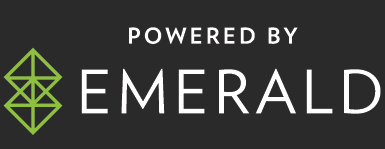What we can expect from technology, brands and work in 2024 by Leon Gauhman, co-founder of digital product consultancy Elsewhen.
After the AI tsunami of 2023, how do we predict what will happen in 2024?
The recent turmoil at OpenAI encapsulates the breakneck speed of change since ChatGPT’s launch a year ago. In the last year alone, Google and Microsoft launched competing generative AI models in the form of Bing and Bard, Anthropic launched ChatGPT competitor Claude, and Facebook open-sourced Llama 2 and unveiled AI companions. Meanwhile, OpenAI moved ahead with GPT-4, followed by the addition of conversational capabilities to ChatGPT elements such as voice. And OpenAI’s launch of GPTs – or the custom version of ChatGPT – means any organisation can now easily adopt an enterprise-grade, ready-to-use AI platform and redesign its processes with AI, freeing up employees to be highly productive and creative.
Within this maelstrom, predictions are an even riskier business than usual. Nevertheless, here are five emerging themes for the coming year:
AI’s conflict of commercial vs science will continue, underscored by talent shortages
The dramatic sacking and return of Sam Altman as OpenAI CEO magnifies the inherent struggle at the heart of emerging AI tech. Namely that, in the context of such radical innovation, scientific experimentation is not always compatible with ultra-fast commercial growth. OpenAI is now in the strange position of being an $86 billion nonprofit, but its recent crisis is just the beginning of similar moments of reckoning for other AI companies.
This year, we’ll continue to see board members and C-Suites grapple with the balance of a tool that is both full of promise and potentially too disruptive for its own good. This tension will drive home the weight of talent wars within generative AI, too. OpenAI’s hand was forced when most of its 770 employees threatened to quit en masse unless Altman and Greg Brockman, OpenAI’s president, were reinstated. A handful of senior researchers had already quit, too. The move highlights both the shortage of engineers and specialists in generative AI and the sheer leverage they have as a result.
Gadgets will talk back
ChatGPT’s rapid growth has unlocked the value of Large Language Models ( LLMs) by adding a conversational interface to the web’s entire knowledge stack. With ChatGPT now able to “see, hear and talk“, consumers will forget their previous disappointing experiences of voice (e.g. Alexa and Google Home) and become accustomed to an interface that talks back in a meaningful way. Existing gadgets such as fridges, dishwashers, and washing machines will increasingly feature voice interfaces that tell users to top up the rinse aid, clean the filter or connect them to the manufacturer for bigger problems. Looking ahead, we can expect completely new gadgets similar to Humane’s AI Pin wearable, which provides consumers with AI assistance without the need for apps or a screen interface.
We’ll say bye-bye to productivity bottlenecks
In 2024, companies will start investing in redesigning their enterprise tooling by integrating artificial intelligence assistants to accelerate tasks and reduce costs. This will help to unlock the productivity bottlenecks that are plaguing the UK and US economies. This trend will be supported by the rise of highly capable LLM-enabled assistants trained for a particular task, dataset or sector. Domain-specific LLMs will create a new paradigm for software architecture, allowing the creation of more affordable, effective and sophisticated tools for business.
We’ll rethink the meaning of work
As AI takes over the boring, non-scaleable aspects of people’s jobs, what does that mean for the person in that role? Despite Elon Musk’s claims that AI will take our jobs, the reality is that the UK’s unemployment rate remains low at 4.2%, and the US jobless rate is similarly steady at 3.7%. Instead, bosses and their teams will start thinking of different ways workers can deploy their creativity, including developing business models, products and services that could take their company into completely new areas.
Anyone can be an artist/coder/copywriter
Large Language Models democratise previously specialised skills such as writing code for data analysis or creating an image. This shift allows the simple building of blocks of creativity, like writing scripts or computer programs, to be available more widely. This Adidas ad, created by just one person in just a few hours, rather than requiring a whole creative team working over several weeks, demonstrates the power of such technology.
While this development arguably has implications for specialised jobs, it also frees people up to build on their existing skills, taking them in previously unimagined directions.
Final thought
Technology-driven turbulence will continue to be an overriding theme for this year. For brands, the challenge will be to rise above the dramatic headlines and find ways of harnessing generative AI and LLMs to create new value from their unique data and content. As with all technological revolutions, it’s the early adopters – those prepared to embrace generative AI and LLMs to supercharge their products and services – who will benefit most.







